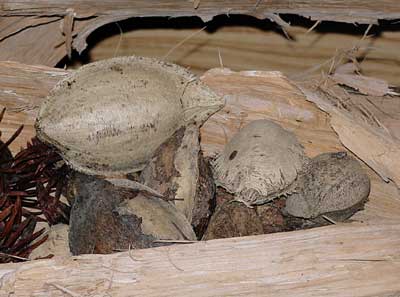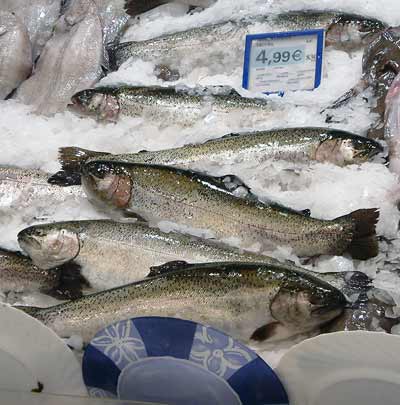A brightly coloured Mediterranean fish, more common in the southern Mediterranean than than the northern. It must be skinned before cooking as the skin is very tough.
Triticale is a cross between wheat and rye. It is thought that the first cross of this kind took place in Scotland in 1875, with the name emerging in Germany in publications in 1935. Triticale have either winter or spring growth habit, vary significantly in plant height,and are generally used as a hay forage for livestock.

The tropical almond looks similar to the almond and is usually pale green, though it may be reddish-purple. There is a fibrous seed containing a pointed kernel, or nut. It can be eaten fresh and raw, or cooked. It is sometimes difficult to remove the fibrous seed without damaging the nut. There is a thin covering of skin on the nut, and it is worth removing it as it can be very astringent. In Australia, this is bush tucker.
The capulin or tropic cherry is native and common throughout the Valley of Mexico from Sonora to Chiapas and Veracruz and possibly western Guatemala. It has been cultivated since early times and is extensively naturalized in Central America and over much of western South America. Today it is cultivated in the Andes more than in its northern homeland and at harvest the fruits are abundantly available in Andean markets. The tree was introduced into California sometime after the mid-1920s. As many as 15 or 20 fruits sometimes develop on a raceme, but half or more fall before reaching maturity. Depending on climate and variety, they ripen from mid-May to midsummer. Resembling the northern cherry, the fruits are 1/2 to 3/4 inch in diameter and deep glossy maroon to dark purple in color, with a thin, tender skin. The pale green, firm, juicy flesh is sweet and agreeable with a touch of astringency similar to wild cherries in some cases. The pit is rather large in proportion to the size of the fruit. The trees will produce fruit 2 to 3 years after planting, and under the right conditions will set more than one crop per season. For reasons unknown trees with gray bark seem to produce larger fruit than those with darker bark.

It is often thought that there are multiple species of trout; brown, speckled, brook and river and so on. In fact they are all one, with the exception of the rainbow trout, and the differences in pattern are owing to environmental variations. The sea trout is a trout which spends a couple of seasons at sea, eating small crustaceans which make it a pink colour. They are all the same fish. The name simply comes from where it is caught or its appearance (which may be affected by its diet). It is coarser-fleshed than salmon.